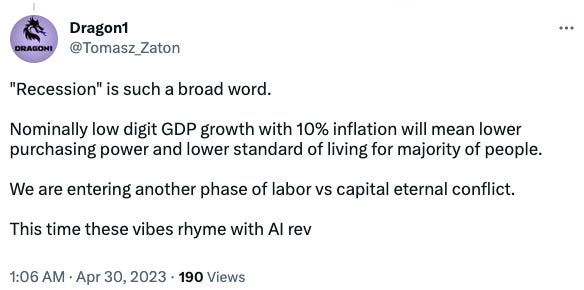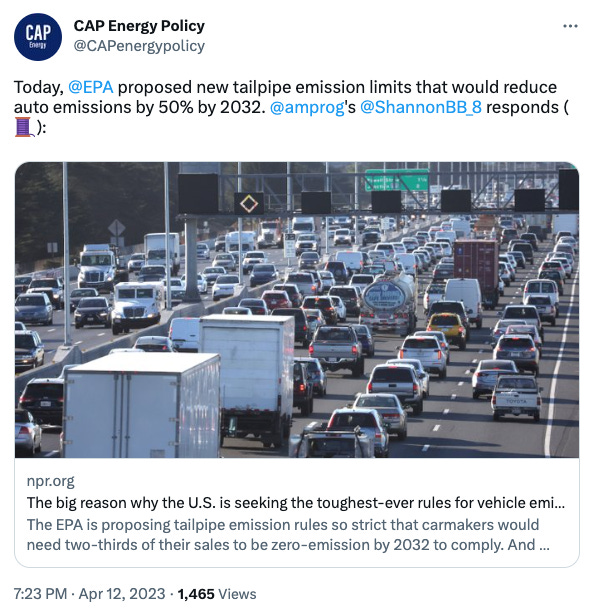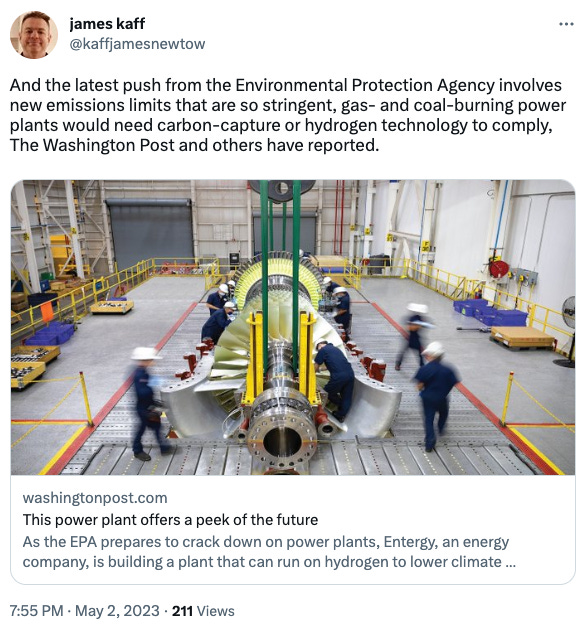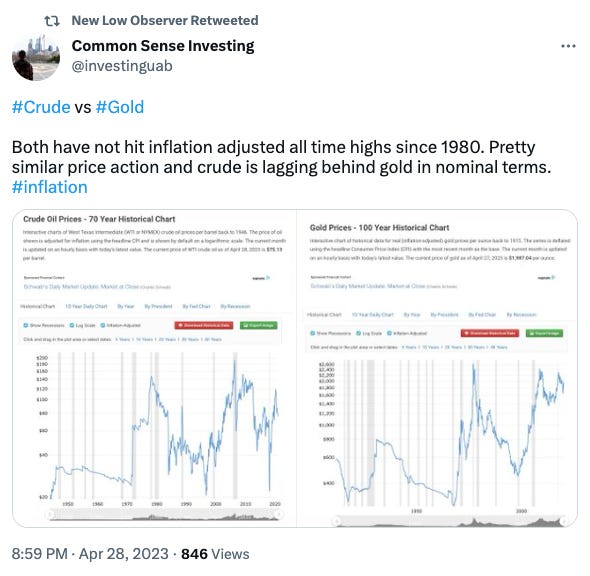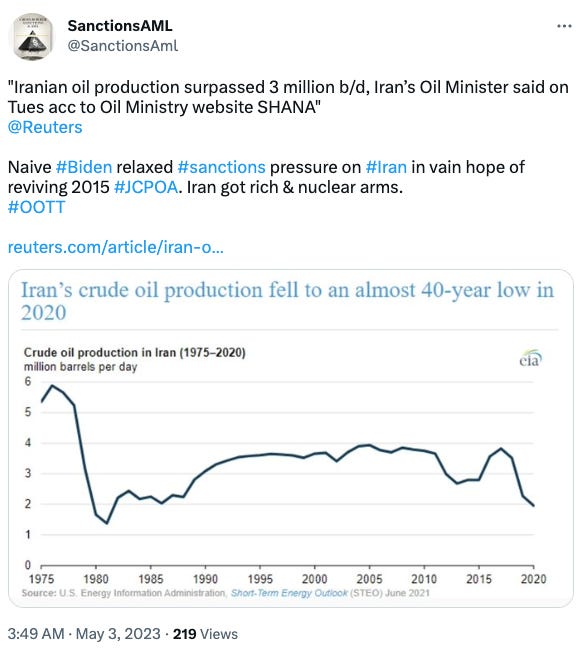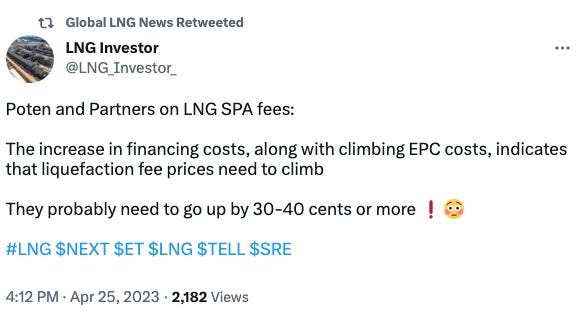Prologue
A warm welcome to all our readers.
We have seen oil prices on the descent through the past month, and one of the major reasons, as described in our previous edition is the credit crunch impacting demand in the short term. This is coupled with weak economic data from China. We believe that the China reopening story was overdone. Oil prices have come down close the $70/b mark. The Fed rate hike, followed with further regional bank bankruptcies, and the US federal debt ceiling issue, will further hit demand thus holding oil at these modest levels.
Will there be a full meltdown of crude oil prices? We do not think so. The crude demand outlook looks poor but cuts in OPEC+ supplies and rising demand for aviation fuel, gasoline (miles driven) and diesel (infra projects) will keep prices afloat. Moreover, globally strategic crude oil reserves will be replenished as prices go down.
China continues in its new found role as mediator to drive consensus between Saudi Arabia and Iran to put an end to the Yemen war. The US does not seem too pleased with this (does anyone really want peace in the world?).
Meanwhile, US and Iran are caught in a battle of tit-for-tat seizures of each other’s oil tankers. The recent US softer corner for Iran has not been appreciated, perhaps these are token demonstrations to show that things are not all that hunky dory?
What have polar bears and oil have to do with each other, do you ask? Well, for one there is an intense game of land (and sea) grabbing going on as the Arctic Ice melts.
Natural Gas Prices have remained muted around the $2/MMBtu, and will do so for a short time due to demand depression, mild weather and high inventories. LNG exports and movement has also come down. In fact, natural gas production in some plants has been slowed down or even shut down. Future demand increase will come from power generation, and heating as temperatures turn colder.
From our Trading Desk
Russia is accumulating foreign currency reserves that are not dollars or euros. Limited convertibility of these alternate currencies will influence Russia’s efforts to market its commodity production to a wider spectrum of destinations and diversify its holdings. Russia will likely return production to capacity to support its income and diversify reserves.
The case for stagnant range-bound price: In past releases, we have discussed the confluence of US SPR releases with a slowdown in disappearance in China and a freight recession. US crude oil production has been gradually recovering and is close to pre-Covid levels. The recovery in production across the past year in some form offset the voluntary cuts announced by OPEC, which combined with the macro sentiment will keep prices range-bound until a demand shock happens. OPEC production cuts have effectively converted what would have been an otherwise inelastic supply to an elastic supply.
The US debt ceiling and broadly, the US debt will impact risk appetite and the US$ at different time intervals. The US debt ceiling negotiations will influence risk appetite and US Treasury bond pricing over the next 60 days. Changes to risk appetite will likely be visible in the market’s response to the composition of duration in the issuances following a resolution. Rates, deficits, and pace of GDP will influence the US$ for months to come.
The case for volatility: Macro stresses tend to absorb liquidity, both physical and financial, leaving a market vulnerable to high amplitude price moves.
From Sift, our Narratives Engine
Geopolitics and War
Sudan power struggle threatens East African crude oil flows
China mediating between Saudi Arabia and Iran to end the Yemen war
UN resolution acknowledges Russia as the aggressor in the ongoing war
Drone attack on Putin, origins being researched
China bypasses US tariffs by shipping solar products via South East Asia
The Arctic game is now in full swing
Global Macros
A few perspectives on recession, inflation and M2 money
Regulatory
EPA pushes new stringent emission limits
EU to charge a carbon tax on imports (CBAM) to mitigate carbon leakage
Ireland removes VAT on solar panels
California passes first-in-the-nation rules to cut rail pollution
Australia’s Northern Territory gives green light to fracking
Shipping and Freight
US, Iran have resorted to seizing each other’s oil tankers
Tanker rates decline while Container Rates rise
Crude Oil and Oil Products
Comparing Crude Oil Prices vs Gold Prices and vs Equity Indexes
Permian basin crude oil production is steadily increasing
Biden administration has approved $8-billion Willow oilfield in Alaska
Saudi Aramco projects 88 mmb/d world oil production by 2027
OPEC+ supply falls
Nigeria’s crude is on a fire sale
Iraq to auction exploration contracts
Iran oil production is on the rise
Decrease in gas drilling is reducing bids for fracking
A decrease in gas drilling is freeing up resources and reducing bids for fracking. This may come as some respite for the shale industry that has been burdened with cost inflation.
Jet Fuel demand is rapidly rising as aviation comes back into its own
Indian Oil Corporation to build a $10b sustainable aviation fuel plant
Indian Oil had, last year, stated its plans to spend $25 billion to achieve carbon neutrality by 2046.
BP shares suffered the 8th largest one-day % drop of the last 30 years
Natural Gas and LNG
US natural gas prices remain low
US sees a bright LNG future, LNG ship demand rising
LNG liquefaction costs are on the rise
A report on Qatar’s LNG exports projections
A mild winter, high inventories has brought down Europe gas demand
Drop in Europe’s gas demand & record LNG imports drove a drop in natural gas prices
Lower gas supplies could lead to a increase in prices in the medium term
Nigeria to setup LNG plant with Norwegian help
Power and Renewables
Coal prices to further ease into 2024 as per the World Bank
https://twitter.com/TheCoalNews/status/1653081348507156489











